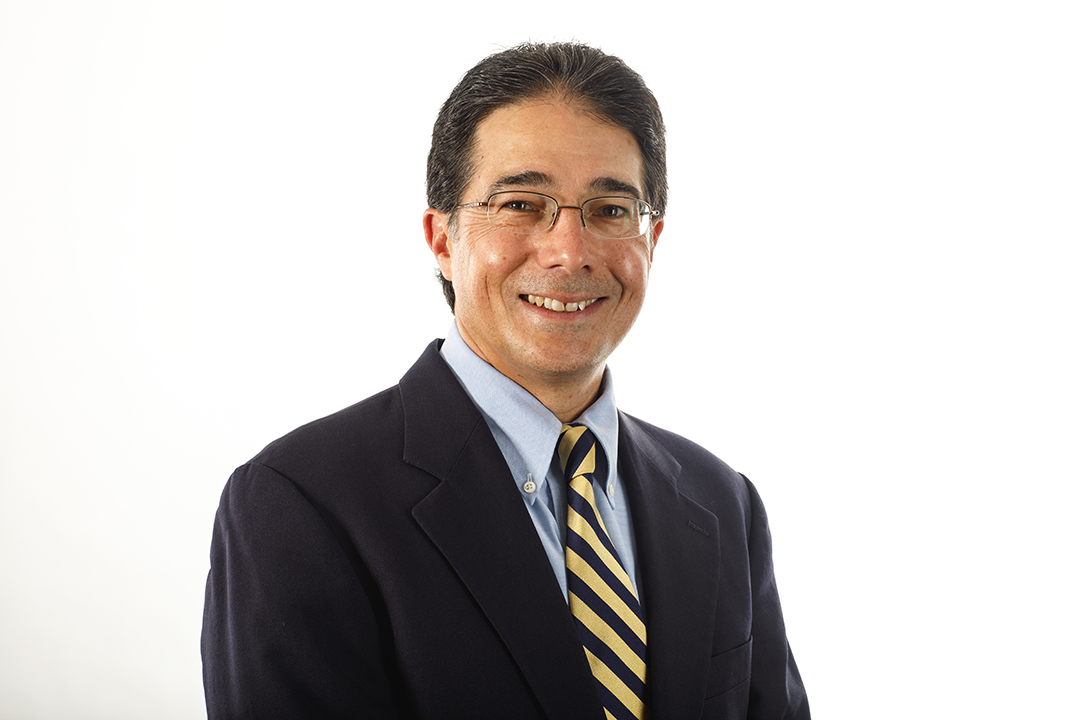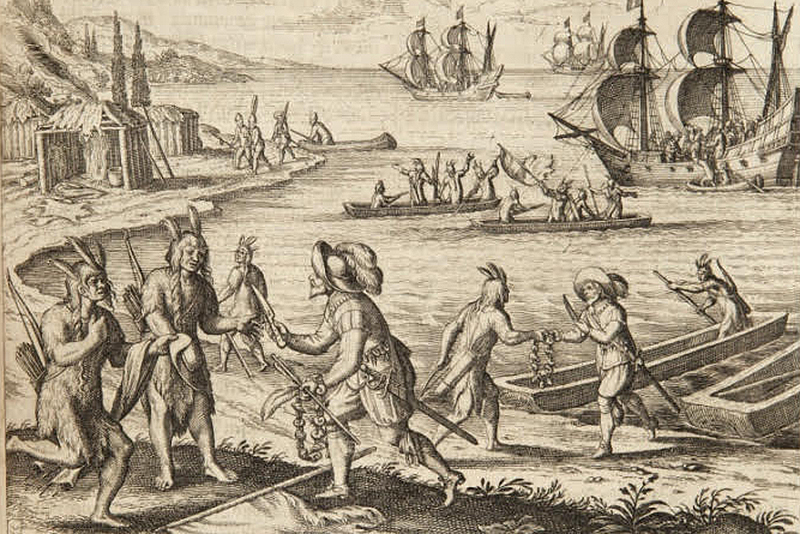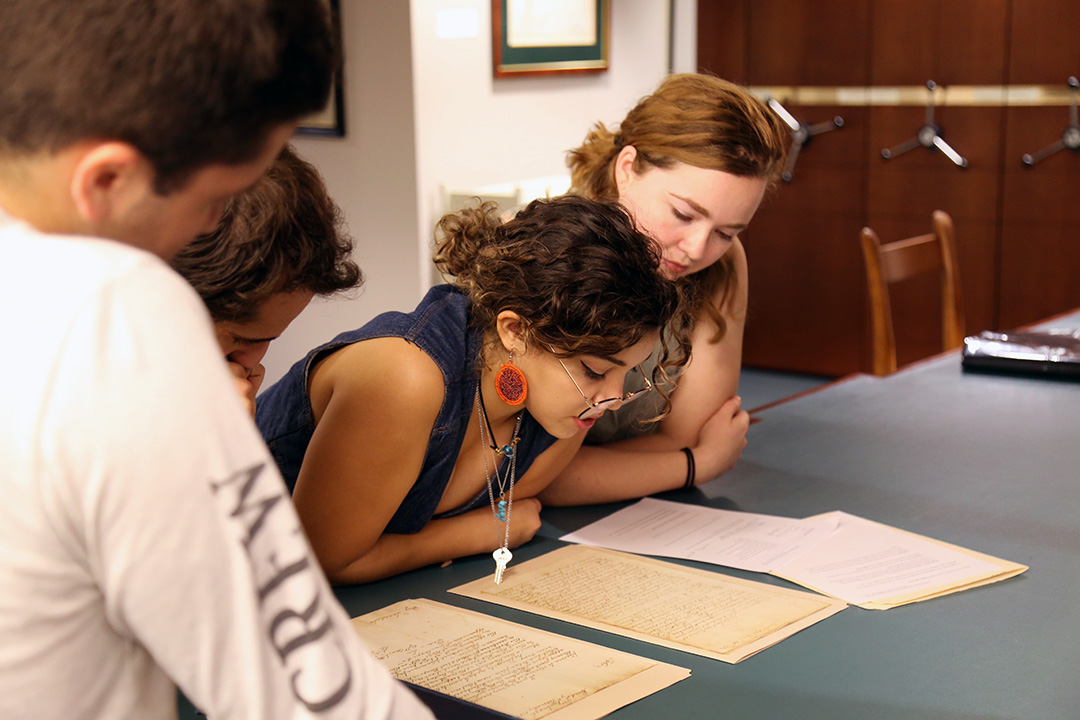This story was originally published in November 2019.
The traditional Thanksgiving story, a cheerful tale handed down through grade school classes and dated textbooks, is built on the image of welcoming Native Americans greeting benign Puritan colonists to Plymouth, Mass., in 1621 and sealing their friendship with a feast.
That story, at best, glosses over the plight of Native Americans. In his new book“This Land Is Their Land: The Wampanoag Indians, Plymouth Colony, and the Troubled History of Thanksgiving,” David J. Silverman, a history professor at the George Washington University Columbian College of Arts and Sciences, deconstructs the facts around the Thanksgiving holiday.
Working with Native American communities and scholars, his research sheds new light on the fraught history of the Wampanoag and their uneasy alliance with the Pilgrims. As the 400th anniversary marking that harvest meal in the New World approaches, Dr. Silverman hopes his book sparks honest dialogue about America’s past.
“To me, a myth that treats American colonialism as a bloodless affair is more than bad history,” he said. “It is hurtful to both modern native people and to Americans generally because it doesn't allow us to understand ourselves in a critical way.”
In fact, Dr. Silverman noted, for the past 50 years, the Wampanoag Indians have marked Thanksgiving as a national day of mourning.
Like many other Native Americans, they spend the holiday somberly reflecting on a history of genocide, the theft of their lands and the assault on their culture. At the Plimoth Plantation, a living history museum in Plymouth, some staff paint their faces black on Thanksgiving and perform traditional ceremonies to both honor their ancestors and remember a legacy of oppression.
“These men and women are hurt by the way we celebrate this national holiday,” Dr. Silverman said. “It makes them feel like second-class citizens in their own country. The national day of mourning calls attention to the fact that white America's triumphs have been borne on native peoples’ backs.”
The Truth Behind the Tale
By 1621, the Plymouth Wampanoag were in desperate straits. Much of their ranks had been decimated by an infectious disease, possibly smallpox, brought to this country by Europeans. They faced threats of war from their rivals, the Narragansett. Wampanoag Chief Ousamequin entered into a “mutual defense pact” with the Pilgrims, according to Dr. Silverman.
The first Thanksgiving occurred when Chief Ousamequin brought 90 men to the colonists’ harvest celebration. Wampanoag tradition holds that the group arrived at the camp in alarm after hearing the English firing guns during the festivities.
But the ensuing decades brought an influx of settlers, increasing tensions and leading to outbursts of violence between the native people and the Pilgrims. In 1637, settlers retaliated for a purportedly slain Pilgrim by burning a Wampanoag village, killing 500 men, women and children. According to Dr. Silverman, the animosities culminated in King Philip’s War, the brutal 1675-76 conflict that resulted in colonists and their successors nearly wiping out the Wampanoag over the next two centuries. As the Thanksgiving story gained traction over time—primarily among post-Civil War Northeasterners fearful of the arrival of European immigrants—Native American voices were largely silenced from history.
“The Thanksgiving myth brings native people into the story of our national origins, but then they disappear. The Pilgrims and their descendants carry on, but native people are just gone,” Dr. Silverman said.
“I wanted to continue the Wampanoag story well after the 17th century into the present day so readers can see that native people never went anywhere. They’re still here.”

History professor David J. Silverman says it is important for students to know that "indigenous people are essential to what it means to be an American."
The story of Native Americans is often told by the people with whom they interacted—fur traders, missionaries, military officers. “Most of the sources [of Native American history] are generated by outsiders,” he said. Those accounts, usually presented just a sliver of Indian life, often excluding women and children while “distorting what native people were thinking and saying and doing,” he said.
In the early 2000s, while canvassing Martha's Vineyard courthouses and historical societies during a rainy vacation trip, he uncovered a research jackpot: volumes of documents related to the Wampanoags, including land deeds, court dockets, estate inventories, town meeting minutes and more. Some were even written in the Wampanoag language. “Those kinds of records are rare and utterly invaluable,” he said. The material led to his first book on the Wampanoags in 2005.
While Dr. Silverman continues to mine the trove of primary sources, he also works with tribal elders and community leaders to help accurately frame Wampanoag history.
“Doing this kind of work has exposed me to corners of my own country that I didn’t even know existed,” he said. He has even hosted a Wampanoag official in his undergraduate course on Native American history—a tribal council member who performed an ancestral honor song in his classroom. “For many students, the native perspective on American history is utterly revelatory,” Dr. Silverman said. “I’d like them to leave here realizing that the indigenous past is important and that indigenous people are essential to what it means to be an American.”



